Thaipusam
₹ 368 onwards
View Singapore PackagesWeather :
Tags : Fairs & Festivals
Thaipusam 2025 Date : 11th February, 2025
Thaipusam, Singapore Overview
Celebrated by the Tamil population of Singapore, Thaipusam is a two-day festival dedicated to Lord Murugan - the Hindu God of war and epitomizes youth, power, and virtue. It falls on the day of the full moon during the Tamil month of Thai. Celebration of Thaipusam in Singapore involves early morning prayers, asceticism, self-control, processions and piercings.
Must Know Before You Visit Thaipusam
Thaipusam Pooja Timings : The procession will start on 10 February 2025 at 11:30 PM from the Sri Srinivasa Perumal Temple and conclude on 11 January 2024 at 11:00 PM at the Sri Thendayuthapani Temple.
Read More on Thaipusam
Dawn of Thaipusam
Without delay, Murugan assumed complete leadership of the Devas and along with the celestial forces, emerged victorious over the Asuras. To commemorate this day, people started celebrating Thaipusam. This religious festival also marks the day when Goddess Parvati blessed Lord Murugan with a divine spear, known as the Vel so that he could destroy the evil Soorapadman with it. In some communities, it is believed that Murugan's birthday falls on the day of this festival.
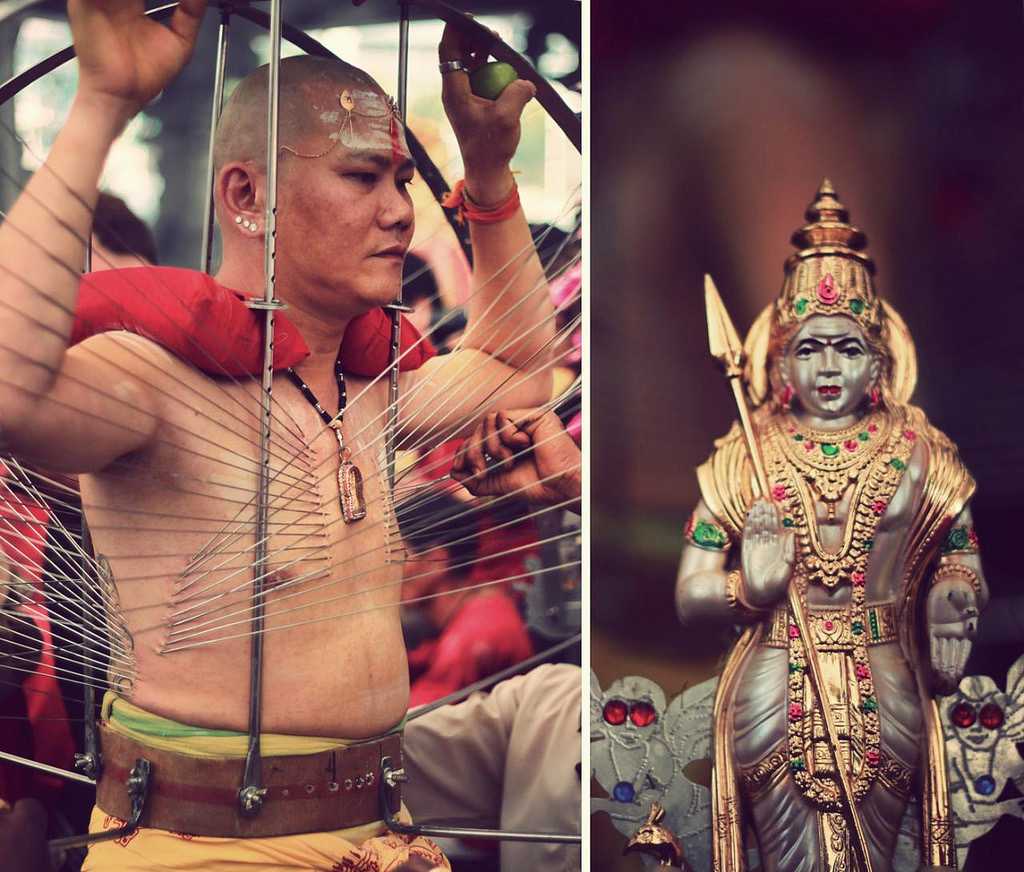
Celebration of Thaipusam in Singapore
The First Day, or the Eve of Thaipusam
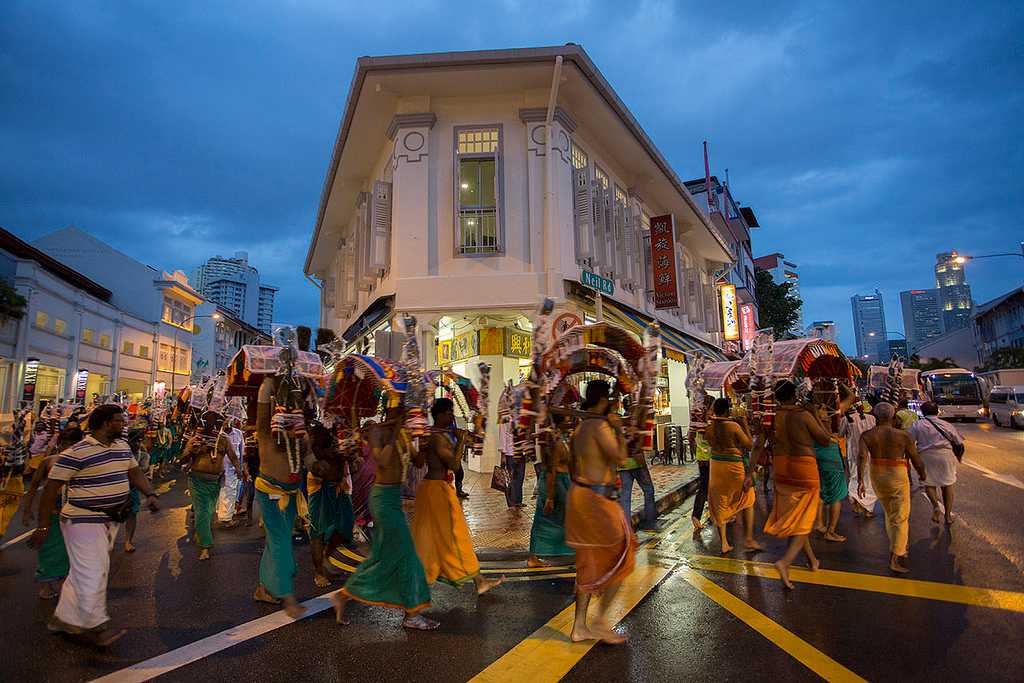
For the devotees, Thaipusam is the day when the month-long spiritual preparation topped with practising celibacy, and stringent vegetarian diet comes to a crescendo. It is a widespread belief that only after the mind rids itself of all physical pleasures and material gains, can a worshipper be able to undertake the sacred task of carrying kavadis without being subjected to pain.
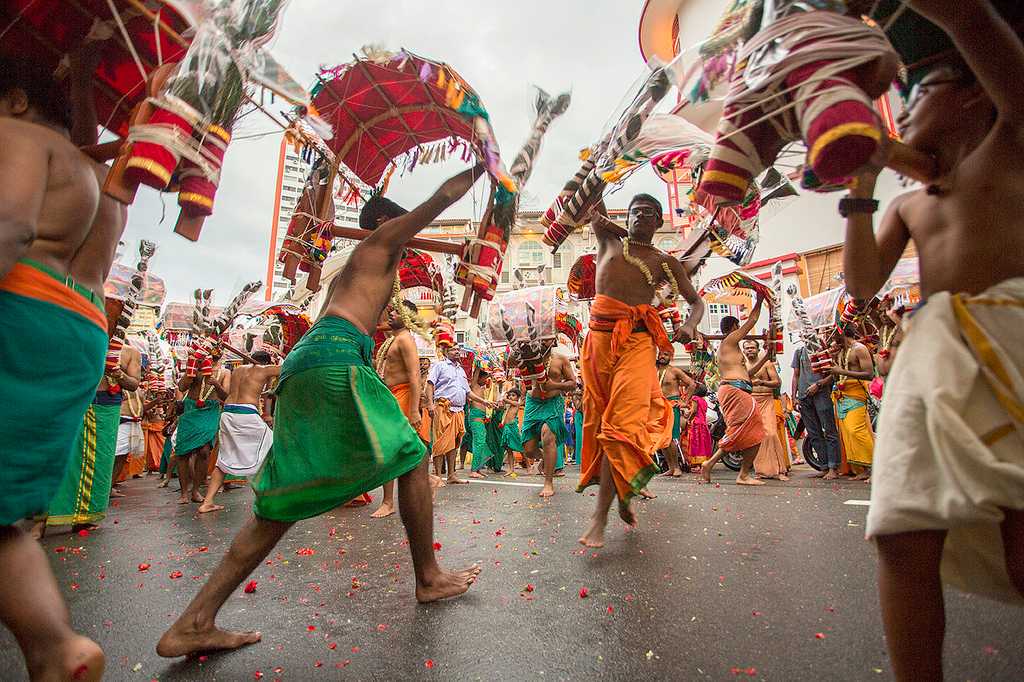
Rituals Associated with Kavadi
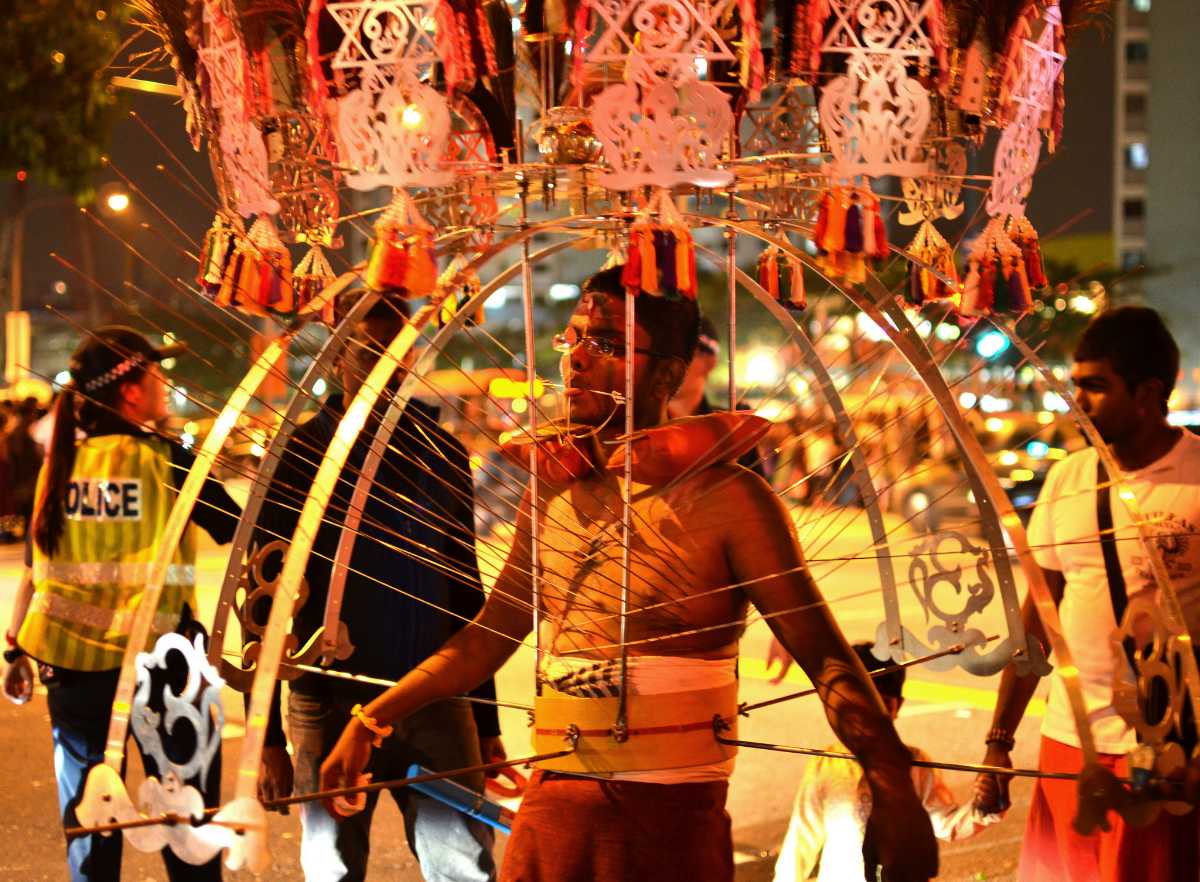
Today, a kavadi can weigh up to 40 kilograms and is around 4 meters in height. Usually built in a semi-circle shape, the kavadi is adorned with fruits and peacock feathers. Though there are bars to provide some sort of support to the carriers, much of the weight is born by the piercings itself. It is believed that by carrying this physical burden, the devotees play to the Lord for their divine help.
The spiked kavadis also resemble the vel of Lord Murugan, or his spear: a divine weapon that his mother has given him. It is thus believed that getting pierced does not hurt, because when the mind and body of a devotee are free from all material and physical pleasures, the body can withstand such tasks without suffering from any pain.
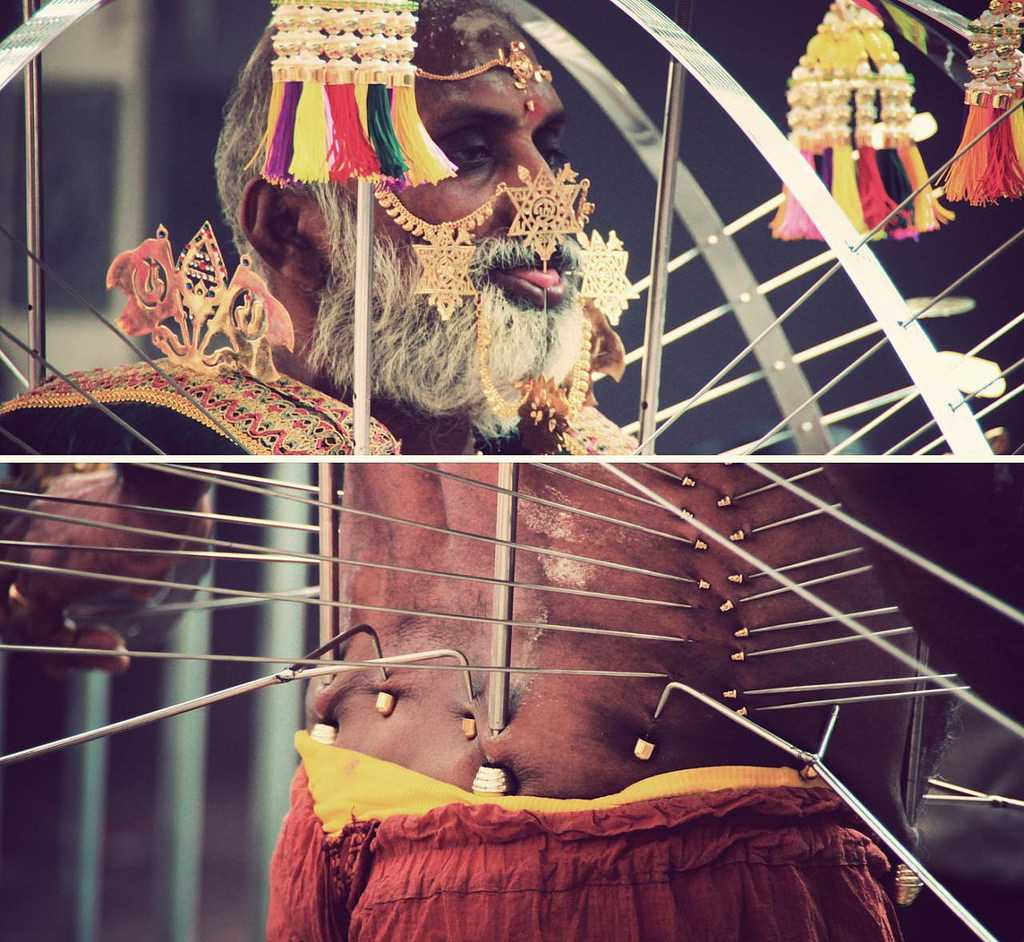
Where to Go for Celebrating Thaipusam in Singapore
The major landmarks where these celebrations take place include:
Little India
The annual kavadi procession starts from the charming streets of this historic place, and then goes on for 4.5 kilometres, with more and more visitors joining in between.
Sri Thendayuthapani Temple
Built in the dedication of Lord Murugan, the temple never fails to mesmerize onlookers with its dazzling roof and etched glass panels that cleverly catch the sparkle of the rising and the setting sun.
How to Reach - Sri Srinivasa Perumal Temple can be accessed both by the public as well as private transits. The nearest MRT station is Farrer Park. From the Exit G of this station, it takes only a minute to reach the holy place of worship on foot. Those who prefer to travel by road may book a cab, ride their own vehicles, or get on the bus 64, 65, 66, 67, 21, 23, 125, 130, 139, 141, 147, or 857 and disembark at the Serangoon Road bus terminal which is just a minute away from the temple.
Sri Mariamman Temple
One of the most easily recognizable and famous landmarks of Singapore, Sri Mariamman Temple is the oldest Hindu temple in Singapore. The temple also boasts of having an elaborate gopuram, which is adorned with the sculptures of various deities as well as mythological beasts.
How to Reach: Sri Thendayuthapani Temple is a famed tourist attraction and is connected to major routes throughout the city. It is only a short walk away from the Exit B of the nearest station, the Dhoby Ghaut MRT. The buses 64, 123, 139, and 143 can also take you to the bus stop at Tank Road. From there, it is a two-minute walk to this revered temple.
Top Hotel Collections
Top Hotels Near Thaipusam
Thaipusam Reviews

Have a Question on Thaipusam?

experience.